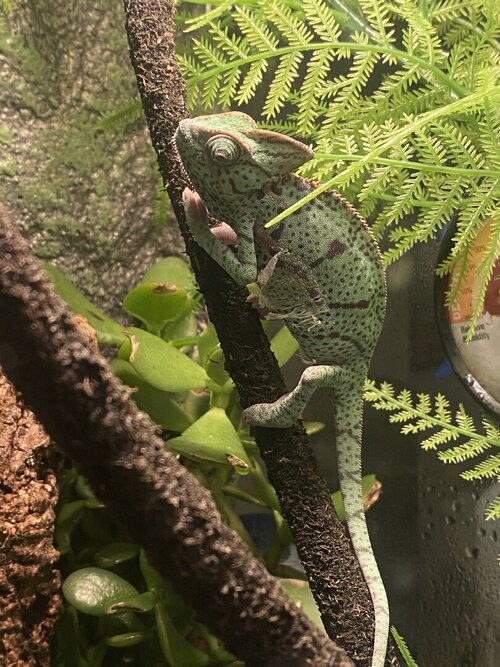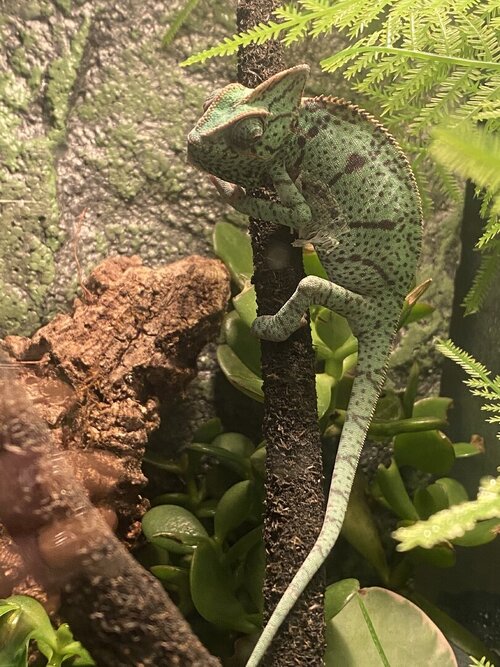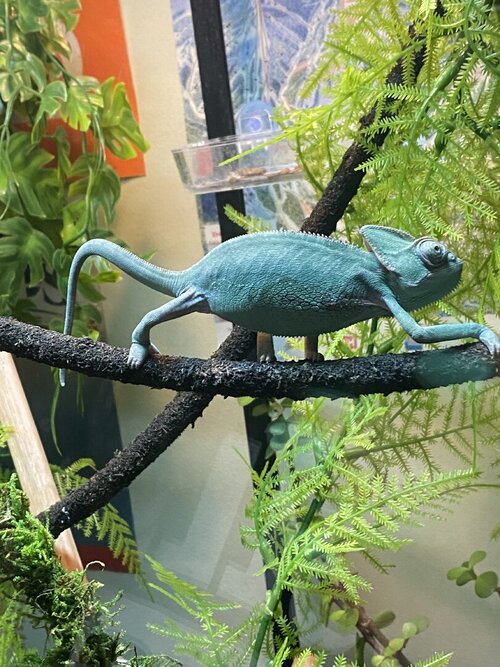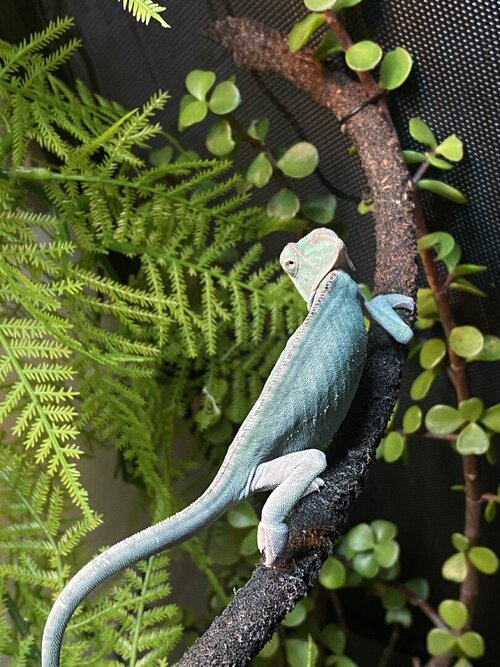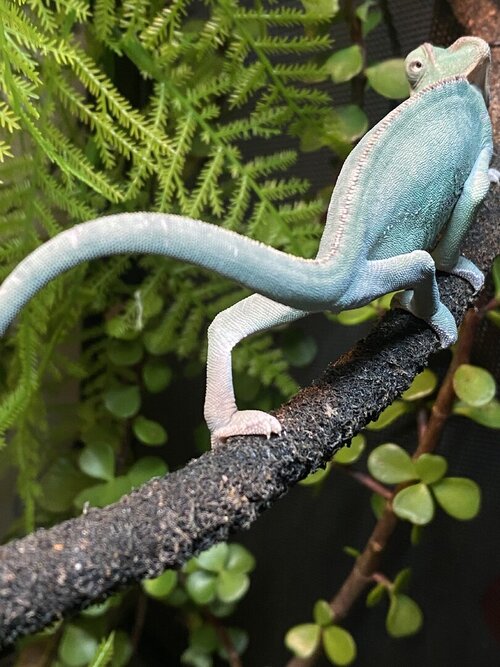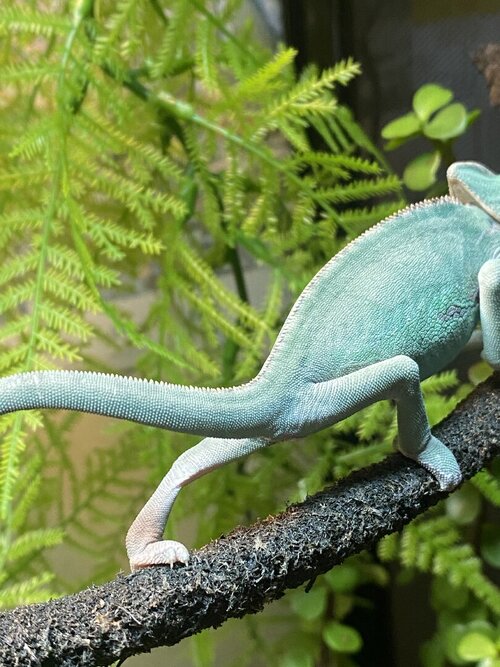Erinincharge
New Member
I am a brand new chameleon owner, I’ve had my veiled for almost exactly one month. I’ve been trying to learn all I can, but as you all know there’s much to learn and a lot of conflicting information out there.
This afternoon, I look into her cage and see her black stripes and spots. I’ve only witnessed this behavior when she is really upset/irritated, but in this instance, she was just chillin in her cage without disturbance. She is shedding, maybe that’s something to do with it?
Another environmental change that comes to mind is that for the last month, we thought we had to have lamps on 24/7 so at night, we’d give her a “night lamp” which was basically a purple bulb, not very bright. The last 2 nights, we’ve been turning off all lamps and letting her sleep in darkness, so I’m wondering if maybe she’s trying to absorb heat with her black spots? I’m just skeptical of that solution only because of her posture in the picture I’m attaching. I‘ve read that this stance typically indicates aggression; does it always?
Any thoughts on the matter would be much appreciated in addition to any further advice you’re willing to share for a new cham owner!!
This afternoon, I look into her cage and see her black stripes and spots. I’ve only witnessed this behavior when she is really upset/irritated, but in this instance, she was just chillin in her cage without disturbance. She is shedding, maybe that’s something to do with it?
Another environmental change that comes to mind is that for the last month, we thought we had to have lamps on 24/7 so at night, we’d give her a “night lamp” which was basically a purple bulb, not very bright. The last 2 nights, we’ve been turning off all lamps and letting her sleep in darkness, so I’m wondering if maybe she’s trying to absorb heat with her black spots? I’m just skeptical of that solution only because of her posture in the picture I’m attaching. I‘ve read that this stance typically indicates aggression; does it always?
Any thoughts on the matter would be much appreciated in addition to any further advice you’re willing to share for a new cham owner!!

